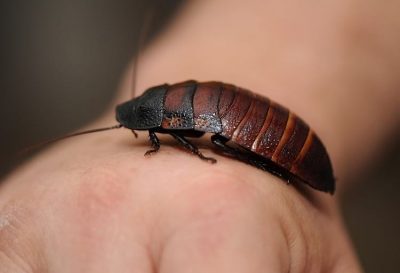Balut: A Filipino Delicacy Not Many Have the Stomach to Digest
Share

Balut: Freshly cracked opened boiled egg with developing duck embryo. (Shankar s. / Flickr)
Over the centuries, people across the globe have come to develop their own particular delicacies and special street foods that make them different from the rest. Think of a pizza and one immediately knows it is Italian; talk of a baguette and France comes to mind, while a burrito reminds us of Mexican food. But here’s one delicacy called balut, originated in Philippines, which is a gastronome’s delight locally, but is resented by many in most parts of the world for various reasons.
Origin of balut egg
The Chinese are said to have introduced this delicacy in 1885 in the island nation of Philippines. Called maodan in the Chinese language, which roughly translates to ‘hairy egg’, the taste of balut quickly spread to other Southeast Asian countries like Cambodia, Vietnam and Thailand, which began preparing, eating and selling this midnight snack in very large numbers. Balut, which means ‘wrapped’, is generally prepared from duck’s eggs and is not only a healthy and nutritious item of food, but is also considered to be a great aphrodisiac by the locals. A quick look inside the shelled delicacy could be a bit revolting to many; but what is it that actually goes into its preparation that has placed balut on the list of one of the strangest and most disgusting food items in the world?
Preparation of the Filipino delicacy
To begin with, balut is prepared by boiling a partially-fertilized 14 to 21 week-old egg of a mated female mallard duck and served with spices or in soups, which give it a distinctive flavor. A hundred eggs are first placed in a bamboo basket, buried in sand directly under the sun for it to develop or are covered in heated rice husks, which ease in incubating the embryo evenly. Different countries follow different techniques, but the basic remains the same – apply heat. The incubated eggs are checked upon frequently to see if they are damaged in any way or have developed cracks, which can render them useless. After a span of 14 to 16 weeks, the well-preserved eggs are ready to be brought out from under the ground and led straight into the cooking pot.

Peeled boiled balut egg. (Foodienut / Wikimedia Commons)
Boiled with its shell intact, the egg is then served, which has to be eaten by breaking open the hard-boiled outer covering. Seasoning and spices, along with salt, are added to the cracked open balut and consumed the moment it is de-shelled. Sometimes, balut is also boiled and served in its own amniotic fluid, added with a mixture of seasoning and vinegar or chillies. The moment the shell is broken open, the unappealing sight of the fertilized embryo with its beak, claws and feathers in one piece, floating in its amniotic liquid, can easily put anyone off.
The lengthy incubation period and the careful preparation, which includes a combination of flavoured soup and soft meat of the bird, make an economical balut an exceptionally expensive street food in the world. Some properties of the fertilized embryo are also said to up a man’s libido, which makes it a hot favourite among local people. Also, balut is an excellent source of energy, proteins and calcium, which nourishes half of the Filipino population that falls below the poverty line.

Balut served in its amniotic fluid along with vinegar and some spices. (Sspitzer2 / Wikimedia Commons)
Views of locals and welfare organizations regarding it consumption
On the flipside, culturally, the idea of serving balut does not find many takers. As per Filipino-Christian folklore, an evil shape-shifting demon called Aswang, who feasts on unborn fetuses, is believed to resemble a balut. Also, the way the snack is eaten; it stands similar to aswang’s procedure of sucking babies out their mother’s womb, thus believing that consuming balut can turn a man into an aswang. As per Islamic customs too, an animal that has not been slaughtered correctly is forbidden to be eaten, thus striking balut out from the culinary list.
However, there are divided opinions on its consumption according to different cultural and religious beliefs. While the popular snack does have many connoisseurs, certain animal welfare organizations disregard the idea of eating a partially-fertilized duck embryo and consider the practice inhumane.
The humble balut might have gone unnoticed around the world for quite some time now, but the Center for Culinary Arts and Municipality of Pateros in The Philippines joined hands in April 2015 to prepare the world’s largest serving of balut and finally brought it into the limelight, getting an entry into the Guinness Book of World Records. The debate surrounding balut’s credibility as a food item might continue for a long while; but it is a given that putting health risks, superstitions and resentments aside, balut will be served as long as the mallard duck keeps laying her eggs.
Enjoyed this article? Also, check out “Madagascar Hissing Cockroach: An Unusual Wild Insect That Has Now Replaced Popular House Pets“.
Fact Analysis:
STSTW Media strives to deliver accurate information through careful research. However, things can go wrong. If you find the above article inaccurate or biased, please let us know at [email protected]












